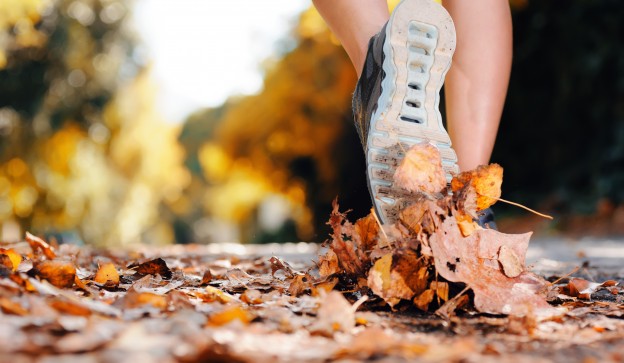Gear up for running outdoors this winter. You may be wondering, how will I run in the brutal cold of North Carolina winters?! Maybe the use of the word “brutal” is a bit out of place, but still never underestimate the cold and what it can do to your body. Use these tips to make sure your feet, and the rest of you, are prepared to battle the elements.
Let’s get started with what we like to discuss the most, your feet! To keep your feet warm we recommend using shoes with the least amount of slush. Ideally, the uppers of the shoe will also have GoreTex lining to help keep out the slush. SmartWool socks are also very important to help wick away sweat but hold in as much warmth as possible. You don’t want to get blisters! You should also have some common sense: if there is snow and ice on the ground, maybe run on the treadmill that day instead. One misstep and a slip on the ice could result in a sprained ankle or worse!
Your innermost layer needs to be snug fitting and sweat-wicking. Outer layers should be waterproof, windproof, and be able to cool as well as you get further into your run and your body starts to warm up. Make sure to always protect your face, head, and extremities with layers. Generally, many expert running guides recommend at least 2 top and one bottom layer for 30 degree temperatures, 2 tops and 2 bottoms for 10 to 20 degree temperatures, and 3 tops and 2 bottoms for zero to 10 degree temperatures. If you are in North Carolina running in temperatures below zero, then you deserve to wear as many layers as you want, and a medal for dedication!
It’s also important to warm up well before you run. You need to get moving and get the blood flowing so the cold won’t feel quite as cold, and your body will be more prepared for your run with less chance of injury. Don’t forget you still need to layer to deal with wind and rain, and also make sure to wear bright clothes so you can be seen!
Don’t focus on training to push yourself for record times, but instead focus on the fact that you are staying motivated and still training against the elements and keeping your endurance up. And most important of all, listen to your body. If you start to tire or feel exhausted, take a break. Pushing yourself too hard can cause injury like sprained ankles or Achilles tendinitis. Run safe during the winter months, and come see us at Raleigh Foot and Ankle Center if you are having any foot or ankle pain! Call us at (919) 850-9111 or visit our website to request an appointment.









